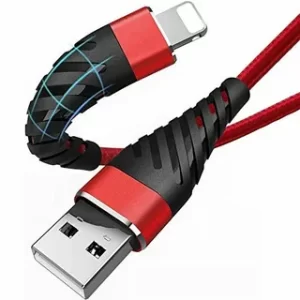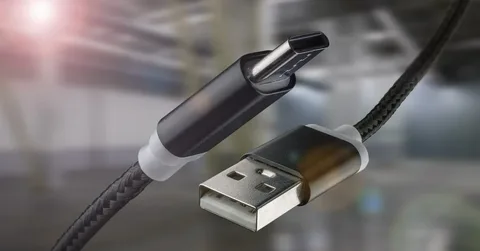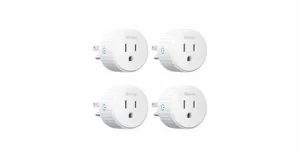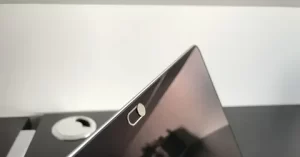In today’s digital-first lifestyle, our dependence on smartphones, tablets, and other electronic devices is undeniable. Whether for work, communication, or entertainment, staying charged and connected is a daily necessity. Yet, few users realize that the humble charging cable plays a major role in how fast and efficiently their devices recharge.
While they may look similar, fast charging cables are built with advanced technology that sets them apart from regular ones. Understanding the difference can save you time, protect your device’s battery life, and enhance your overall experience.
Let’s break down exactly how fast charging cables differ from regular cables.
Understanding the Basics
At first glance, a fast charging cable and a standard cable may appear identical. However, inside the cable, the materials, configuration, and capabilities vary greatly.
Regular Cables
-
Designed for basic power delivery (usually up to 5W or 1A)
-
Slower data transfer speeds
-
Often constructed with thinner wires
-
Inexpensive and widely available
Fast Charging Cables

Fast Charging Cables
-
Built to handle higher power output (15W, 18W, 25W, or more)
-
Support advanced protocols like USB Power Delivery (PD) or Qualcomm Quick Charge
-
Reinforced internal wiring for stability and speed
-
Often include smart chips for safety and voltage regulation
“A fast cable isn’t just about speed—it’s about smart power that understands your device’s needs.” — BoostRank Studio
Key Differences That Matter
Here are the most notable ways fast charging cables outperform their standard counterparts:
1. Power Delivery Capacity
Fast charging cables are engineered to handle a much higher current flow—sometimes up to 100W. This allows them to charge phones, tablets, and even laptops at much quicker rates than standard cables.
2. Built-in Safety Features
Unlike basic cables, fast charging cables often contain built-in smart chips that regulate voltage and protect against overcharging, overheating, and short-circuits. This provides an added layer of safety for both your devices and your outlets.
3. Data Transfer Speeds
Fast charging cables often double as high-speed data cables. While regular USB 2.0 cables may offer transfer speeds up to 480 Mbps, USB-C fast charging cables can reach up to 10 Gbps or more, depending on the version.
4. Durability and Materials
Because they handle more power, fast charging cables tend to be made with premium-grade materials. Braided exteriors, thicker cores, and gold-plated connectors are common features that enhance durability and reduce signal loss.
Use Case Comparison: Fast vs. Regular Cables
| Feature | Fast Charging Cables | Regular Cables |
|---|---|---|
| Power Output | Up to 100W | 5W to 10W |
| Charging Time | 0–80% in under 30 minutes (varies) | Slower, 1–2 hours or more |
| Smart Chip Integration | Yes | No |
| Durability | High (braided, reinforced) | Low to Medium |
| Data Transfer Speed | Up to 10 Gbps | Up to 480 Mbps |
| Ideal For | Phones, tablets, laptops, consoles | Phones, small accessories |
Are All Fast Charging Cables the Same?

Fast Charging Cables
No. Not all fast charging cables are created equal. Some are designed specifically for USB-C to USB-C charging, while others support Lightning connections or USB-A to USB-C formats. The cable must also match your device’s fast charging protocol.
-
For Apple devices: Look for MFi-certified Lightning cables.
-
For Android devices: Ensure compatibility with Qualcomm Quick Charge or USB PD.
-
For Laptops: Use a USB-C cable rated for 60W or higher.
This is especially important if you’re buying third-party accessories, where build quality and certifications vary widely.
In the middle of researching and comparing accessories, platforms like theguestblogs.com offer reviews and tips to help you make smarter buying decisions and stay updated with tech trends.
Common Misconceptions About Fast Charging
There are a few myths worth busting:
-
“Any cable can fast charge if you use the right adapter.”
False. The cable itself must be capable of handling the required current and power. -
“Fast charging harms battery life.”
Not true. Fast charging is engineered to safely charge your device quickly, typically slowing down once the battery reaches 80%. -
“Brand doesn’t matter.”
Wrong. Reputable brands follow safety protocols and testing, reducing the risk of overheating or device damage.
When Should You Upgrade?
If you answer “yes” to any of the following, it might be time to switch to fast charging cables:
-
Your current cable takes too long to charge your device
-
You’re using a high-power charger but not seeing fast results
-
You frequently travel or work on the go
-
You rely on your phone or tablet for work productivity
Final Thoughts
In a world where time is a precious commodity, upgrading to fast charging cables can make a noticeable difference. Whether you’re powering your devices before a meeting or transferring files on the fly, the right cable ensures speed, safety, and stability.
As our devices get smarter and more power-hungry, your accessories need to keep up. Investing in quality fast charging cables isn’t just a matter of convenience—it’s a commitment to efficiency, safety, and smarter tech use. Read More






